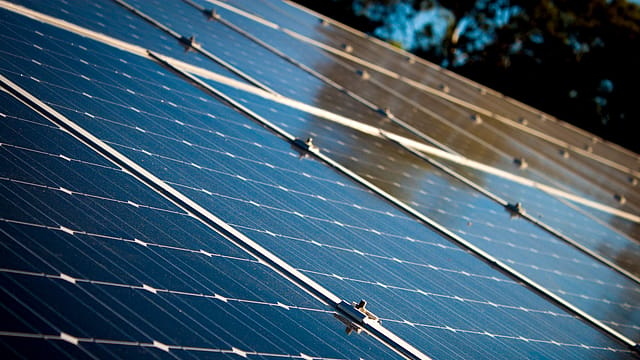Government policies and their impact on the solar power sector
ADVERTISEMENT

While fossil fuels continue to account for a vast majority of the world’s energy production, alternative energy’s overall contribution to the power grid is increasing like never before. Part of this global transition from non-renewable to renewable sources has been dictated by advancements in technology and the growing public concern over rising global temperatures and pollution attributed to the industrial scale production and consumption of fossil fuels. Majority of the energy produced in the world is still reliant on fossil fuels, and the depletion of these resources is a cause of concern. Add to that the effect seen on the environment because of prolonged use of conventional energy resources, which has made the search for alternative energy resources urgent.
Like any new product, research and development accounts for a very significant percentage of the overall cost of production of solar panels, this in turn, drives up the cost-per-unit. Given the tropical location, India gets abundant sunshine throughout the year. The technology required to efficiently convert it into a useable form of energy is very complicated, and the initial investment can be dauntingly expensive. It is for this reason that the industry requires a certain degree of government support, and fortunately, the government has been extremely in favour of solar power, with the announcement of its ambitious renewable energy target of 227 GW by 2022, with 100 GW through solar energy, following the historic Paris Agreement in 2015. Between 2014 and 2018, India increased its solar-generation capacity eight times from 2,650 MW over 20 GW, a feat that many sceptics in the West deemed impossible.
December 2025
The annual Fortune 500 India list, the definitive compendium of corporate performance, is out. This year, the cumulative revenue of the Fortune 500 India companies has breached $2 trillion for the first time. Plus, find out which are the Best B-schools in India.
Despite the enormous success that the Indian solar power industry has achieved in the last few years, there still remain policy related challenges to consider. Perhaps one of the most pressing regulations that the industry needs to look into is the uncertainty with regard to the Goods and Service Tax (GST). According to a Mercom India report, there is still serious confusion relating to the precise rate to be applied for EPC services. Additionally, there are conflicting advance rulings in different states varying from anywhere between 5% and 18% GST. To alleviate the shadow of angst looming over the industry, the central government must intervene and put to rest this confusion. Failing to do so would adversely affect investor confidence (both foreign and Indian) in the industry by perpetuating the current atmosphere of doubt. This would only serve to harm the sector in the long run by depriving it of the capital it so desperately needs.
While the enormous assistance by the government has been the most significant contributor to the development of renewable energy production in India, the recent implementation of Safeguard Duty is widely anticipated to boost the industry even further. Given the growing commercial demand for solar panels, India is widely viewed as a dumping ground for foreign companies who are able to produce and export the Solar cells and Modules cheaper than Indian manufacturers. The introduction of the Safeguard Duty, which is essentially a 25% tariff on foreign solar panels, will go a long way in ensuring that domestic manufacturers remain competitive and commercially viable. The safeguard duty will also help create energy security in India and encourage manufacturers to become active participants in the country’s shift towards sustainable energy. Safeguard duty may propel foreign manufacturers to set up production facilities within India leading to help the country move towards tapping its vast reserves of solar power, while simultaneously creating thousands of jobs in largely rural areas.
Arguably one of the most negative impacts on the solar industry has been due to currency devaluations. During the course of 2018, the rupee has seen a fall of 15% compared to the dollar, creating an enormous, possibly insurmountable challenge for the solar industry. The devaluation of the rupee has also resulted in considerably inflated costs of cells, modules and inverters, along with auxiliary components such as structures and cables, owing to the fact that the prices of imported metals have also increased substantially. If the value of the rupee continues to fall, its effects on Indian solar power companies could potentially be disastrous and leave them vulnerable to foreign players.
Solar power is the future, not just of energy generation, or even of humanity itself, but of the very world we live in. The last two centuries of unchecked fossil fuel consumption have permanently scarred our planet, and if we are to overcome the mistakes of the past, we as citizens must compel our elected representatives to invest in a clean, sustainable, and renewable future, regardless of the challenges we face.
Views are personal.
The author is director, Waaree Energies.
